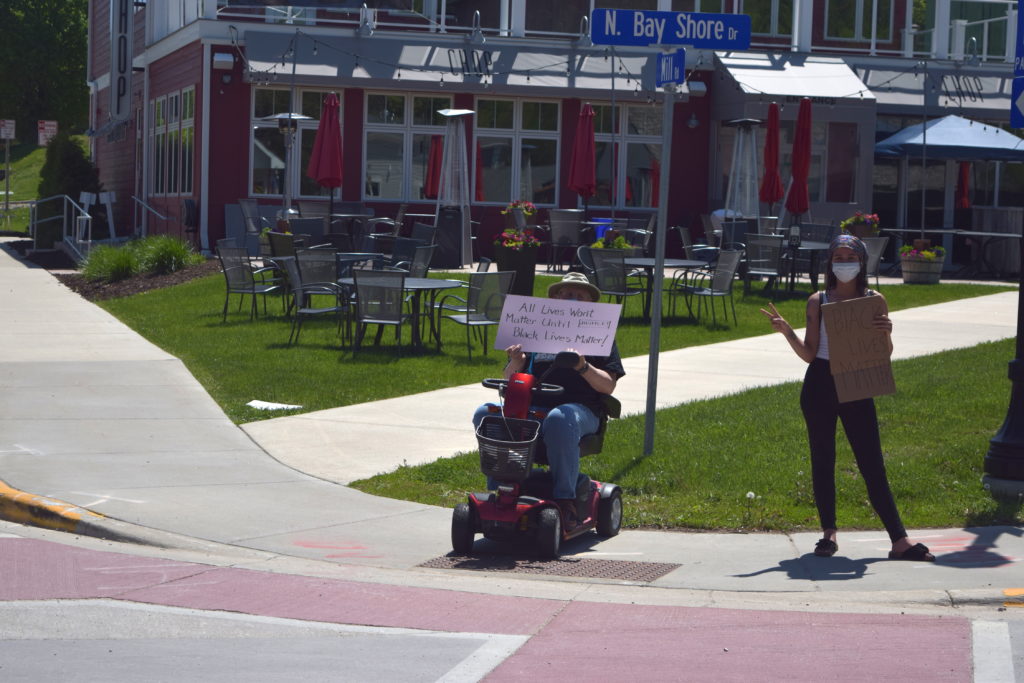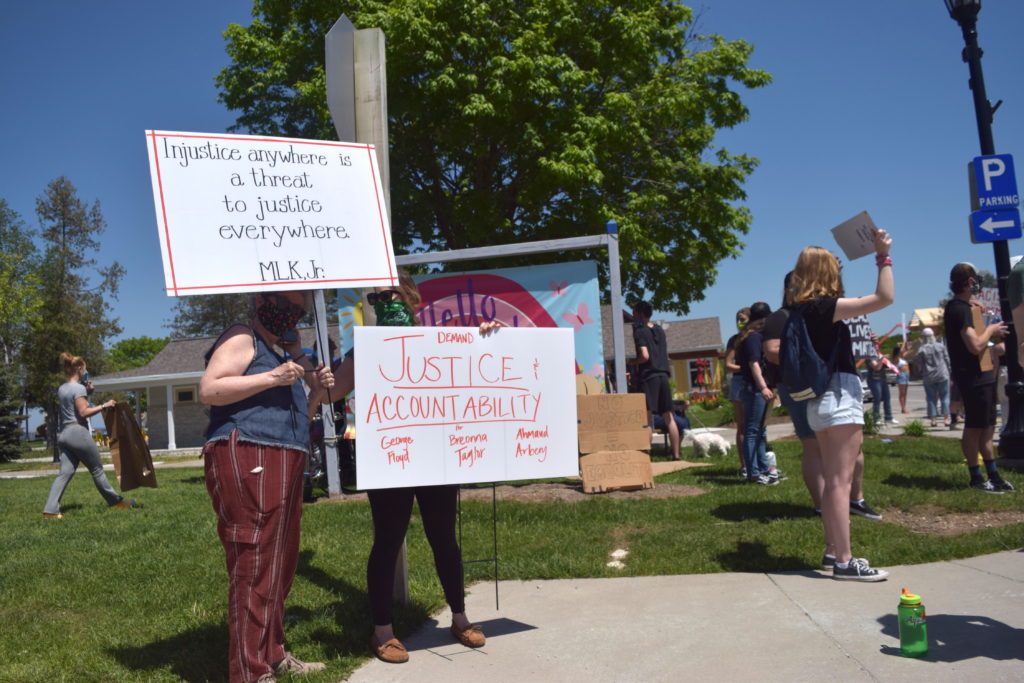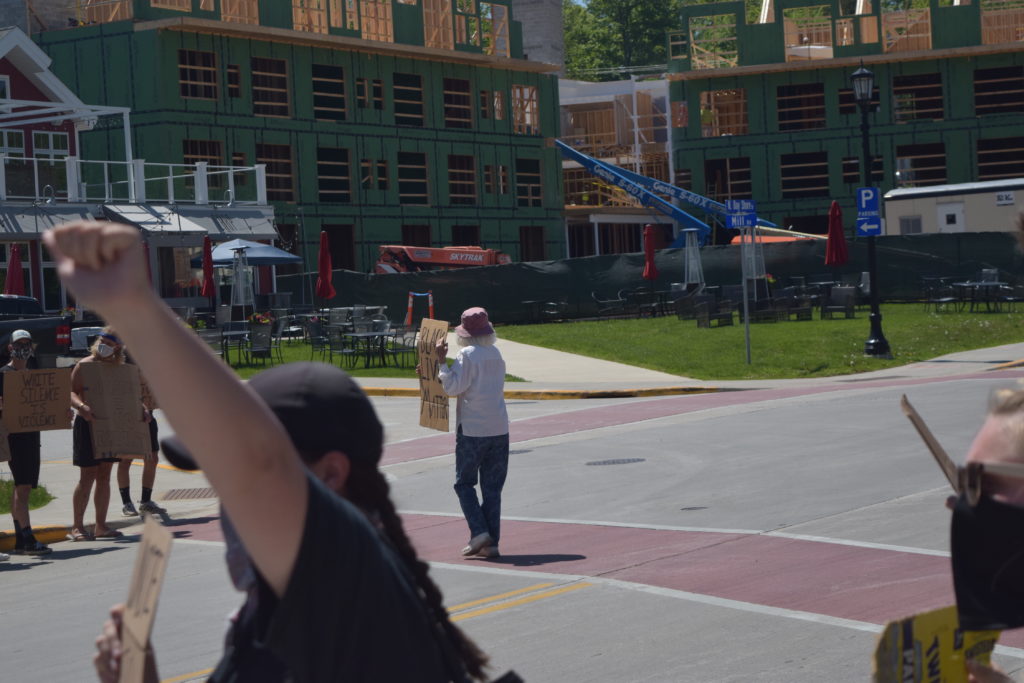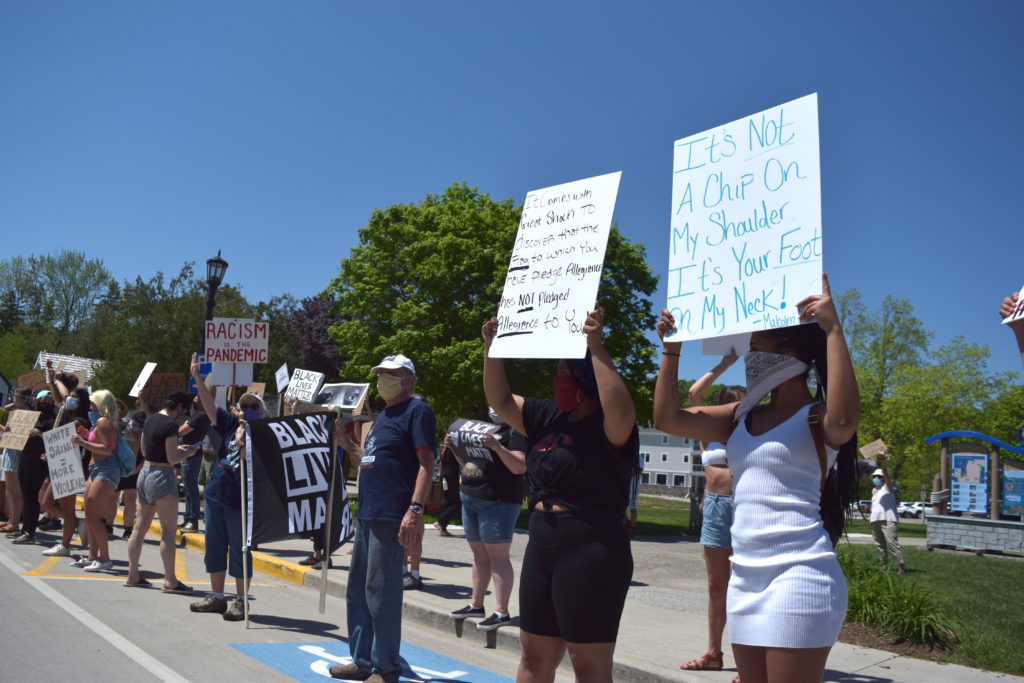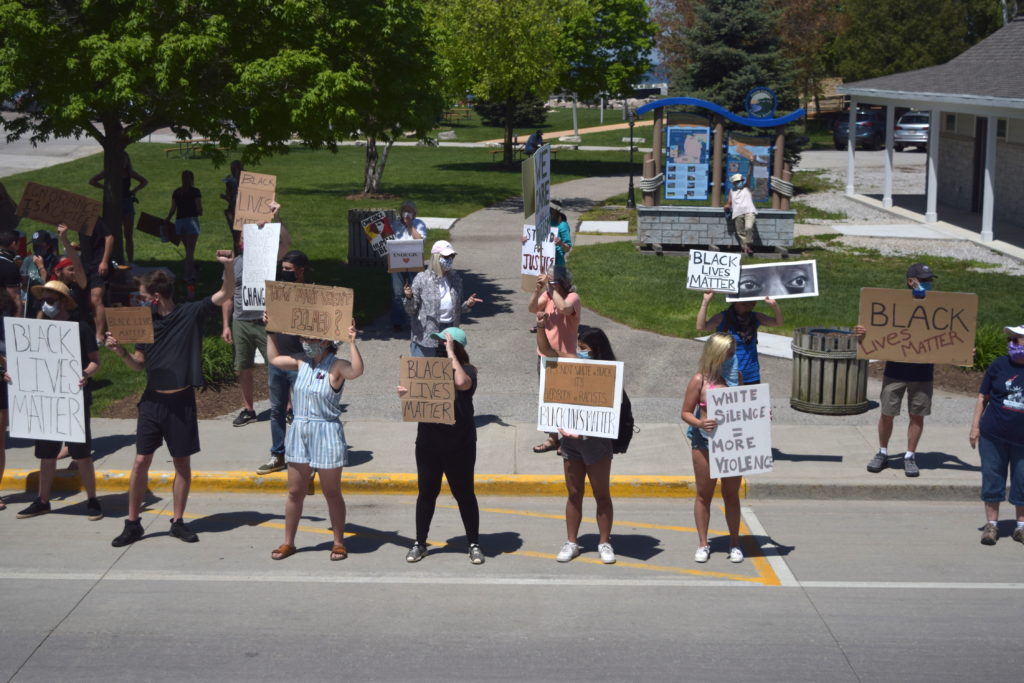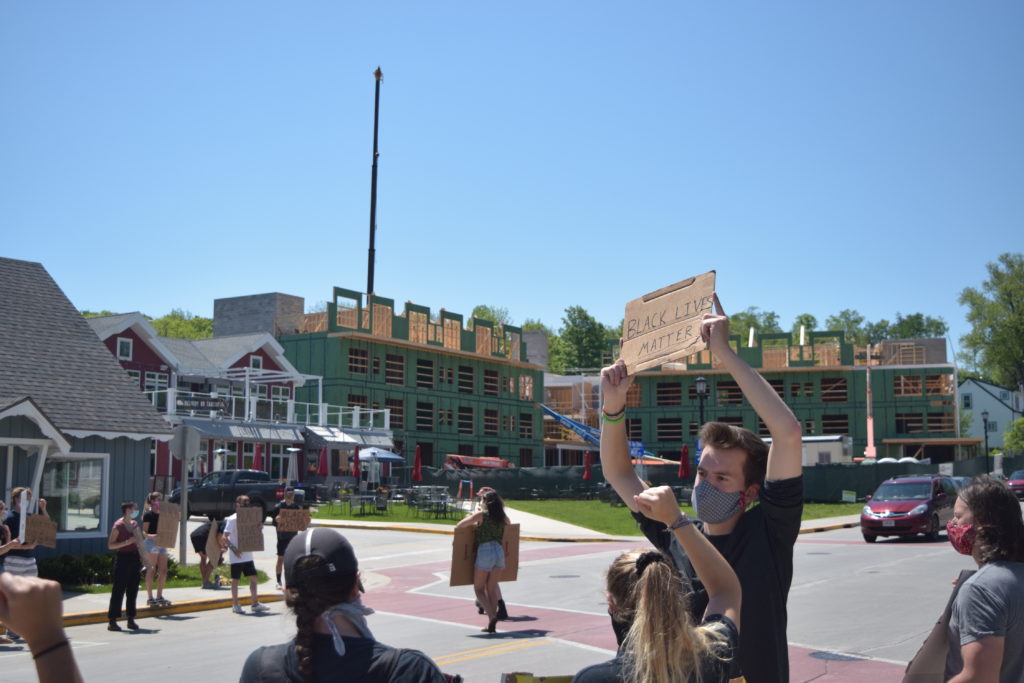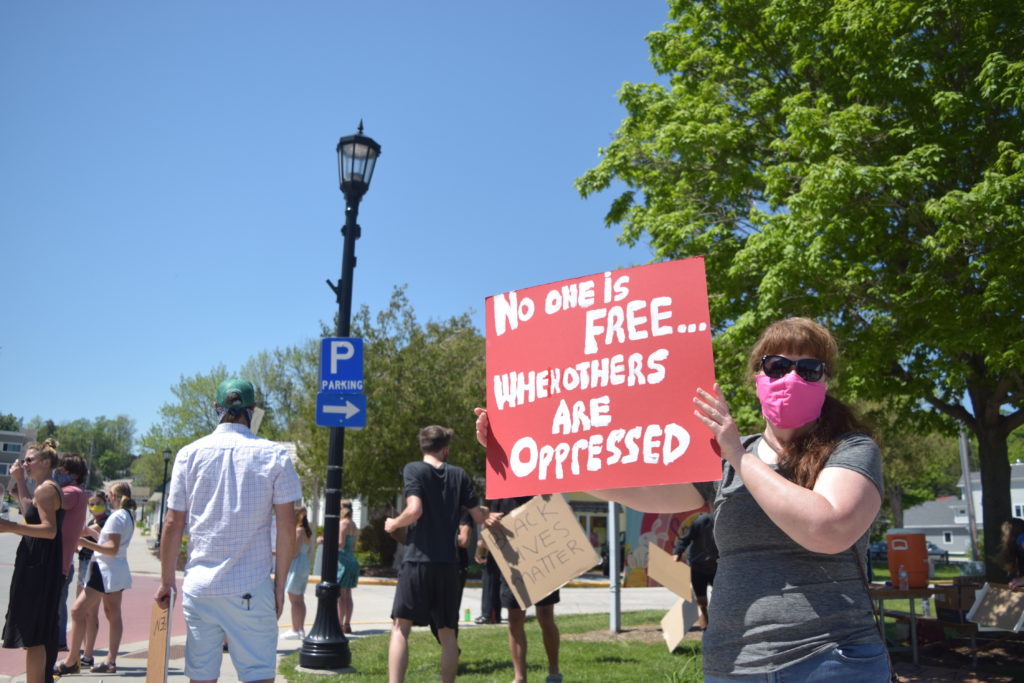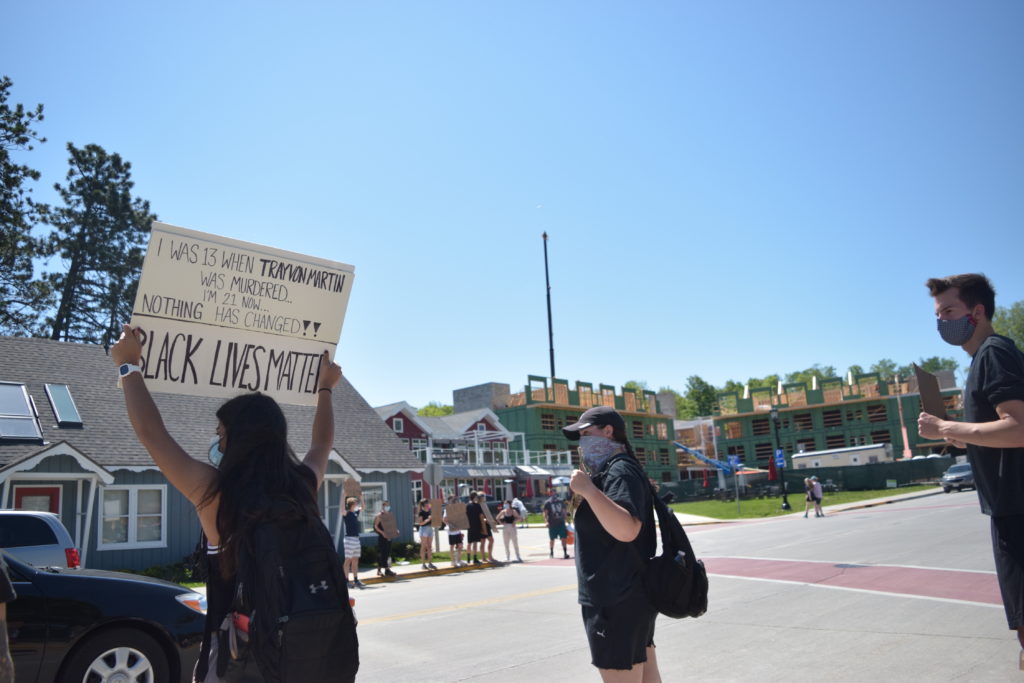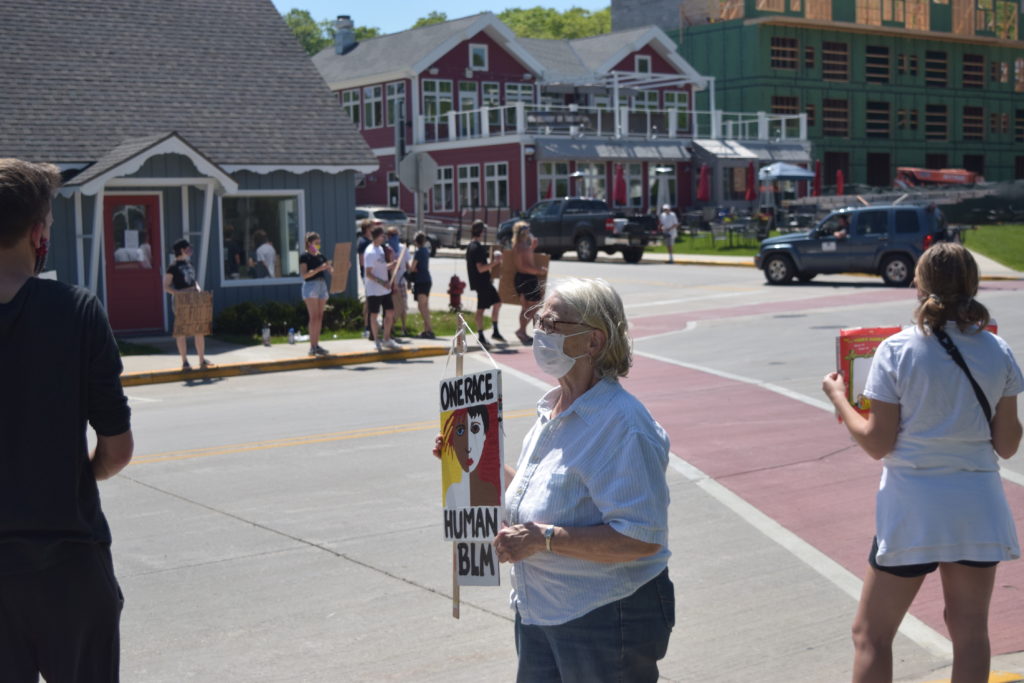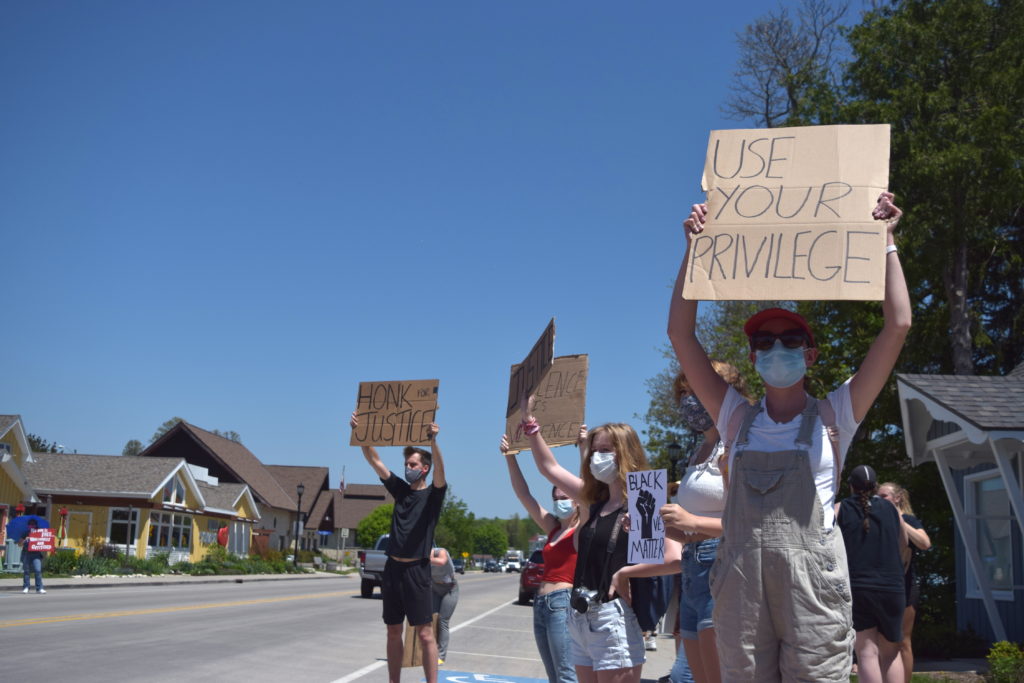Demonstrators Support Black Lives Matter Movement
- Share
- Tweet
- Pin
- Share
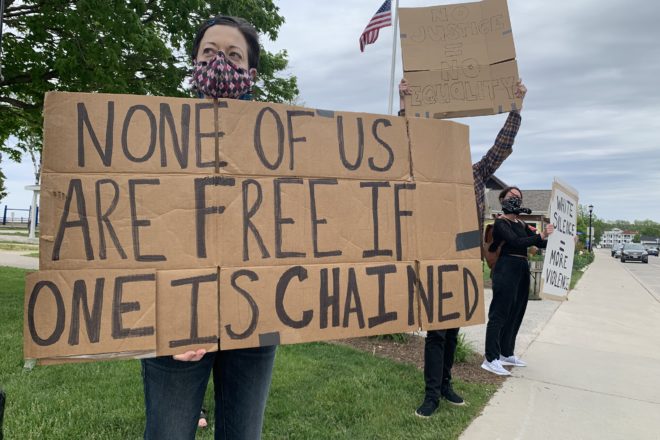
Nearly 70 demonstrators gathered in downtown Sister Bay on June 2 on the second day of demonstrations to show solidarity with the Black Lives Matter protests that erupted in cities and communities across the country last week.
The protests started after George Floyd, who was 46, was killed by Minneapolis police officer Derek Chauvin. Floyd was handcuffed and lying face down on a city street during an arrest. Chauvin kept his knee on Floyd’s neck for nearly nine minutes as Floyd pleaded for his life and bystanders begged him to let Floyd breathe. Chauvin kept his knee on Floyd’s neck for nearly three minutes after Floyd became unresponsive. Police had arrested Floyd for allegedly using a counterfeit $20 bill at a convenience store.
Chauvin was fired and charged last week with third-degree murder and second-degree manslaughter. The three officers who were with Chauvin were fired but had not been charged as of Tuesday.
A group in Sister Bay assembled June 1 on the sidewalk at the corner of Mill Road and Bay Shore Drive for more than two hours. Organizer Cait Ciaccio said she hoped passersby saw the protest as a sign that there is demand for equality and justice, “even in our bubble in Door County.”
“We’re very fortunate here,” she said. “Not everyone feels safe to protest without harassment, and we have to take advantage of that and show our support and solidarity with them.”
Though the group received a few angry glares and a few thumbs-downs, many motorists and passersby honked in support or yelled support from their vehicles.
Officer Tim Fuerst of the Door County Sheriff’s Department drove by the demonstration, turned around and stopped to address the group.
“Thank you guys for staying peaceful,” he said. “I agree with what you’re doing.”
Ciaccio and co-organizer Kindred DeGutis said they plan to have a presence somewhere in Door County every day.
“We have to work, and people have to work, but we’re going to be here as much as we can,” he said.
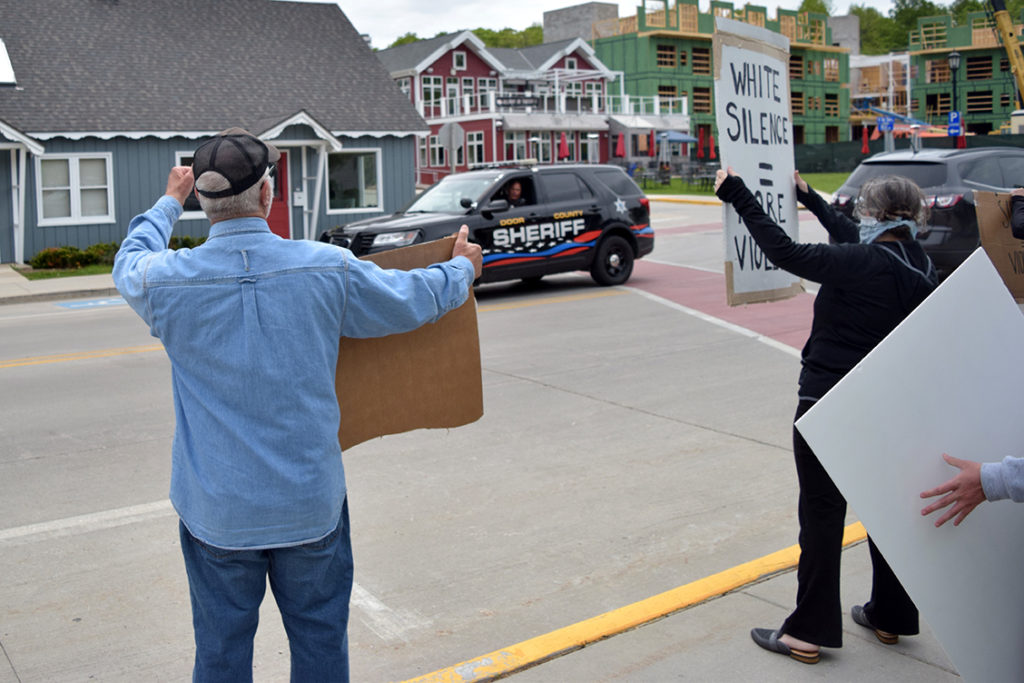
The protests began in Minneapolis but quickly spread to cities throughout the United States and internationally, including large demonstrations in Berlin, Copenhagen, London, Milan and elsewhere.
Mayors in Milwaukee and Madison instituted curfews and called in National Guard troops to protect property as some protesters turned violent, smashing store windows, burning cars and clashing with police officers. Dozens of videos have emerged on social media showing police officers attacking peaceful protesters and targeting journalists with rubber bullets, pepper spray, tear gas, police vehicles and physical force.
Assemblyman Joel Kitchens (R–Sturgeon Bay) said he was appalled when he saw the video of Floyd’s killing.
“It was just very sickening,” he said. “Obviously that was inexcusable. It was murder. I can imagine that being a black person, you would have a different perception of law enforcement than I had growing up.”
Kitchens said his father was an FBI agent and acknowledged that the job of a police officer can be very difficult.
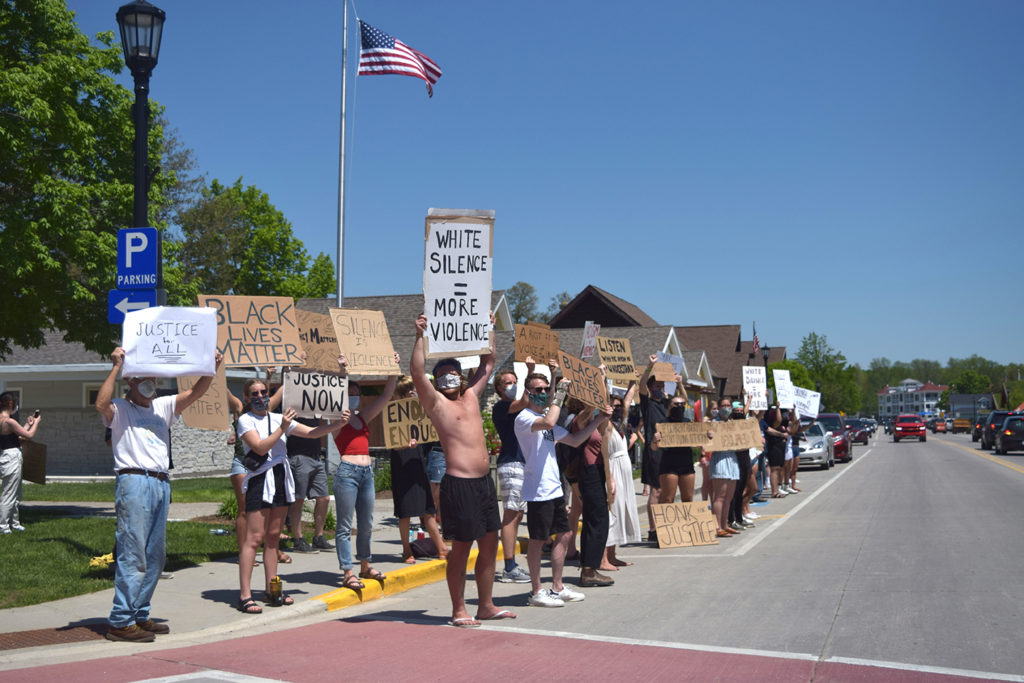
“In many cases they have to make life or death decisions in an instant,” he said. But in the case of Chauvin, “a person with that kind of attitude, no amount of training is going to make them a good police officer. I think we need to look at better screening to keep those individuals out of the force.”
Door County Sheriff Tammy Sternard did not respond to requests for comment, but Sturgeon Bay Police Chief Arleigh Porter said he was disgusted when he watched the video of Floyd’s killing.
“I can’t use powerful enough words for how it made me feel to watch it,” Porter said. “The way the officer looks up with that smug look on his face with his knee on his neck – I don’t know how you do that.”
Kewaunee County Sheriff Matt Joski said what he saw in the video was not consistent with any of the training he has received in 27 years in law enforcement in Two Rivers and Kewaunee.
“Anyone in law enforcement should be devastated and disgusted by what they saw,” he said. “I’m stunned that they all stood around and didn’t say anything, that we need to readjust our restraint.”
Joski said that the well-being of the individual whom police are confronting should be first and foremost in the officers’ concerns in a situation like Floyd’s arrest. Joski said the lack of action by fellow officers is an indication of a cultural problem in the force.
“You have to create a culture in which every officer, from the veteran to the rookie, feels comfortable when they see something that’s not right, to call it out,” he said. “You have to ask, why don’t they have that culture in place?”
Kitchens said he has talked to several area law-enforcement leaders but has not thought extensively about what could be done legislatively.
Critics have pointed to the strength of police unions in protecting officers from discipline as a major impediment to reform. In 2010, former Gov. Scott Walker severely diminished the power of public workers’ unions – specifically, teachers’ unions – with Act 10. The measure restricted collective-bargaining rights, dues collections and worker protections, but the act specifically exempted police unions.
“It seems like police brutality is getting worse, or maybe it’s not and people are just getting more aware of it,” Ciaccio said.
“This is another sign that things need to change,” DeGutis said. “It’s not waiting it out; it’s starting to take that action and responsibility.”
Lynn Brunsen joined the protest made up primarily of young adults.
“I haven’t been to a protest since the ’60s,” Brunsen said. “It’s a shame we’re protesting for the same reasons.”
Editor’s Note: This article has been updated to clarify. The original version stated that “Assemblyman Joel Kitchens (R–Sturgeon Bay) said he was appalled when he saw the video of Floyd’s murder.” Though the police officers have been charged with murder, and police officials and Kitchens have called it murder, the officers have not yet been convicted.



